Pre-race activities
Ironman races begin before we hit the course. We generally arrive at least two days before the event. To keep 1500-2000 athletes organized, our check-in and bike drop-off times are scheduled ahead of time. In addition to reserving the time to check in and organize all the gear, most athletes want a day or two to ride and run the course. If it’s an ocean swim, we get in to feel the water too. After taking care of those tasks, I spend some time in the Ironman Village to check out the gear and purchase one of the race shirts that have all of the participant names printed on the back. I do enjoy my name, “Chris Tubbs”, on an Ironman shirt.
This year 11 members of my triathlon club were registered to race. I was very excited to have such a large representation there. In addition, the Black Triathletes Association had a large showing and I hoped to meet all of those athletes. I’ve come a long way since last year where I only knew a few of the local racers to now being connected with folks from all over the country. My TriFamily is growing quickly.
Swim & bike practice
TriDot, the popular online training and analytics company, held a practice swim session on Thursday morning. Their coaches started with some useful tips and guidance, then we put on our wetsuits and swam around the pier (~800 yds). This was the first time I used the Roka Maveric full-sleeve wetsuit in the ocean. I used it in Waco two weeks prior but ended up overheating. I didn’t want that to happen again, so I had both sleeveless and the full-sleeve. Fortunately, the water temperature was in the low 70s, so the sleeves were fine. Going out, I ended up swimming with the head coach, John Mayfield, and I was easily able to maintain a 1:30-1:35/100yd pace. He kept tapping my feet which was good mental practice for race day (Ironman swims can be very crowded and physical). Once we crossed the end of the pier and headed back to shore, my pace dropped considerably and my heart rate began to creep up to 150bpm as I tried to sustain a sub 1:45/100 pace. In the end, the overall pace was 1:43/100 and I felt good. I was confident that I could sustain a 1:40-1:45/100 pace (1h10min – 1h13min total time) during the actual race assuming the water conditions didn’t change much.
Shortly after the swim, they held a 13-mile bike ride. Most of my PTRC club showed up for the ride. It was moderately paced with a very large group of riders. We rode part of the official course including the bridge. I think the main purpose, besides making sure the bikes were mechanically sound after the travel, was to feel the wind and ride over the bridge. The weather was warm and the wind was not strong. Everyone seemed to be in great spirits.
After the ride, I rested and focused on being mentally prepared for race day.
Race Day Surprise!
After two beautiful days of warm sunshine and a calm ocean, a cold front arrived and sucked all the heat away 🥶. As a result, race morning began as if we had walked into a cold storage unit. We dealt with a cold wind, darkness, and temperatures that felt like the high 30s. Little did I know we were experiencing a harbinger of things to come.
The swim start was very unorganized. There were no corrals, the crowd was on the beach with the athletes and I couldn’t really determine what was happening. Everyone seemed to be moving like a big school of fish with no apparent lead. The delay increased my anxiety of having to pee and not being able to hold it. I didn’t want to pee in the sand while standing with everyone. Eventually, we made it into the chute and were released 4 at a time. The water was warmer than the surface temperature, but it wasn’t the warm relief I was hoping for.
A swim fiasco
Mike Reilly (the announcer) warned us of a strong current moving away from the pier. He urged us to sight and stay close to the buoys. The first stretch was great, I was moving faster than planned (1:33/100) with a relaxed effort (thank you FORM goggles). Approaching the 1st turn, I hugged the red buoy too closely and got caught up in what felt like a water polo match. It was a traffic jam of swimmers. Some treading water, some holding the buoy, while others were trying to take the shortest line through the course. I quickly turned and swam further outside, I prefer to avoid the congestion. Swim-fighting uses up too much energy in my opinion. Good thing I moved because that’s where the real swimming began. As we swam parallel to the shore, I felt like I was working a little harder. I was fighting the current and my pace quickly dropped to 2:30:/100. The seas also became very choppy and I had to time my breaths to avoid a mouthful of seawater. Also, instead of breathing on both sides, I took breaths only on the calmer side. Sighting became almost impossible, I was having a lot of difficulties finding the next buoy and kept losing my orientation. When I did find it, I wasn’t confident that it was the correct one. Also, I had to sight every other stroke to counteract the current that would change my trajectory by 30-45 degrees and cause me to spend more energy re-orienting to find the damn buoy again. It was frustrating.
After making the turn at the 2nd red buoy, I thought we had a straight shot back to the shore. Somehow damn near everyone swam off-course, so at some point, I had to make another sharp turn which really fucked up my orientation. I didn’t know where I was, only that there were people moving ahead of me. I followed the crowd until I could find the pier then figure out which way to go and then sight off of the buoys back to the beach. Oddly, when we were back to waist-deep water it immediately became cold. Really cold, like stepping into a bucket of ice water.
One treacherous lap complete.
Completing the first lap was a relief, I accepted the slower pace as I began the 2nd lap. The field seemed thinner, with fewer athletes around me I felt more relaxed. While navigating the 2nd loop, I realized that wearing my neckless was a stupid idea. I was now carrying a personal chainsaw that was slowly grinding into my neck with every breath. The additional 2500 yards of that pain really pissed me off, so I was happy to finish and end the discomfort. As I exited the water, I saw Robin, Kai, and several other friends in the crowd which lifted my spirits as I ran toward transition. The air was still cold and I was concerned about not freezing while riding the bike.
All in all, the swim was ok for me, I’m at home in the ocean and tend to lose my sense of time while in it. The cold air was biting and I wasn’t looking forward to running wet into T1, but I enjoyed the distraction of all the cheering faces along the way. At the exit, I was unaware of just how badly the swim had gone for many athletes. I didn’t find out until later in the day that almost 25% of racers ended their day with the swim. They either quit because the conditions were too rough, they didn’t make the 2 hr 20-minute cutoff, or they had to be rescued by the Coast Guard or safety boats. Either way, that’s a horrible way to end a race.

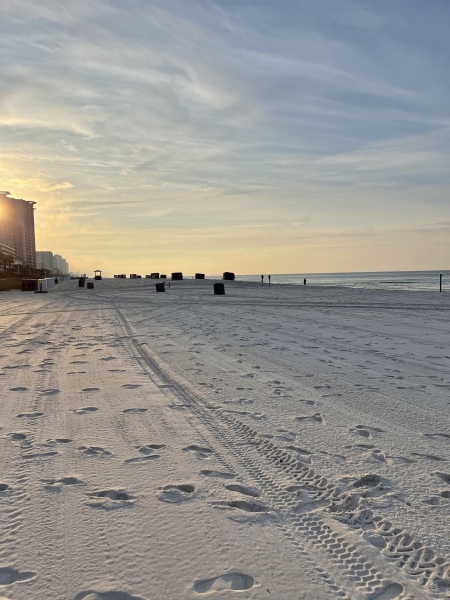

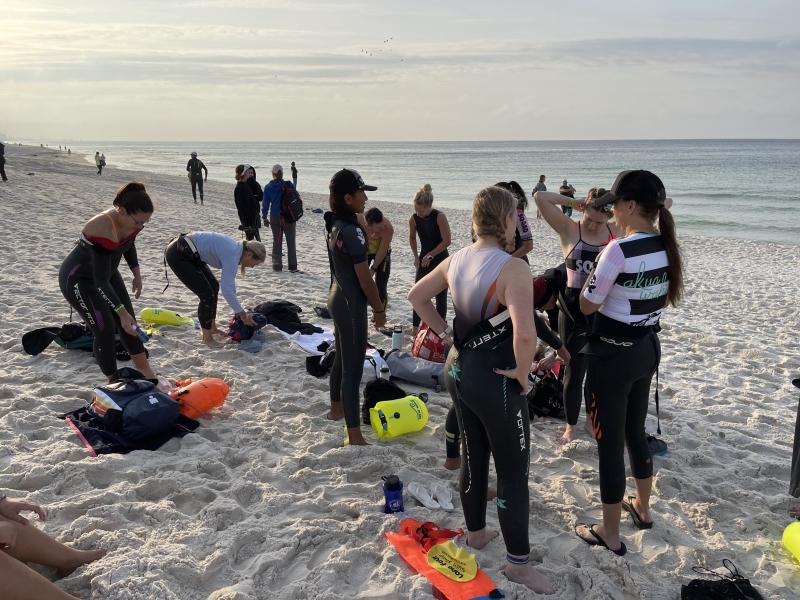
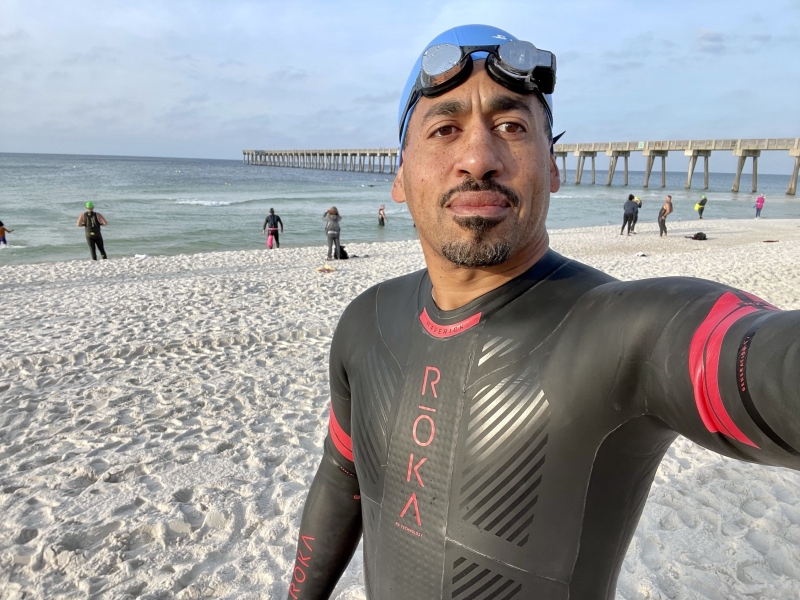
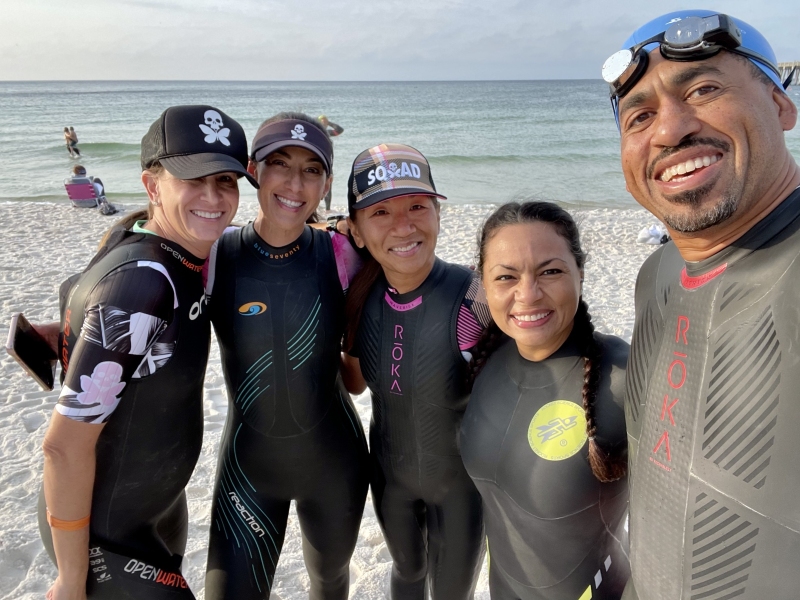
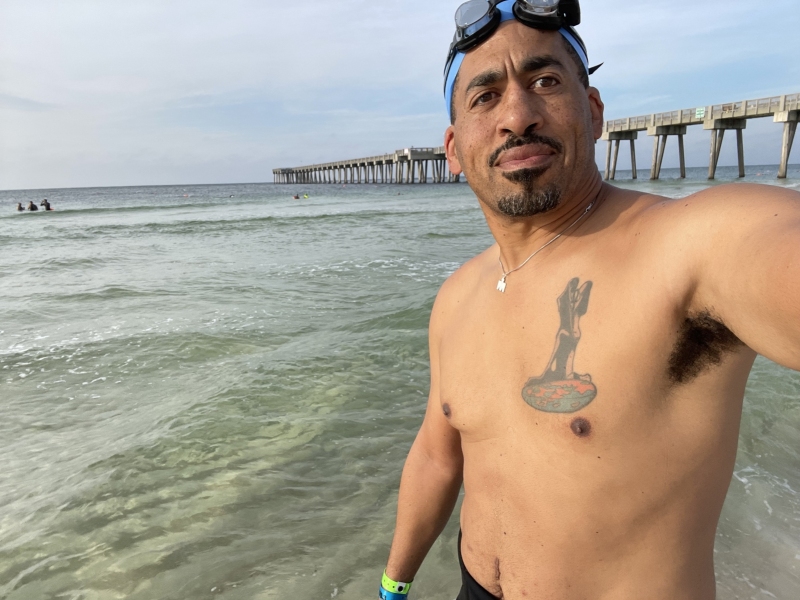


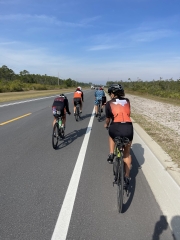

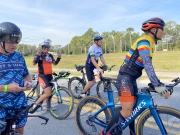
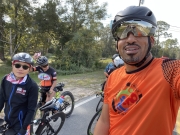

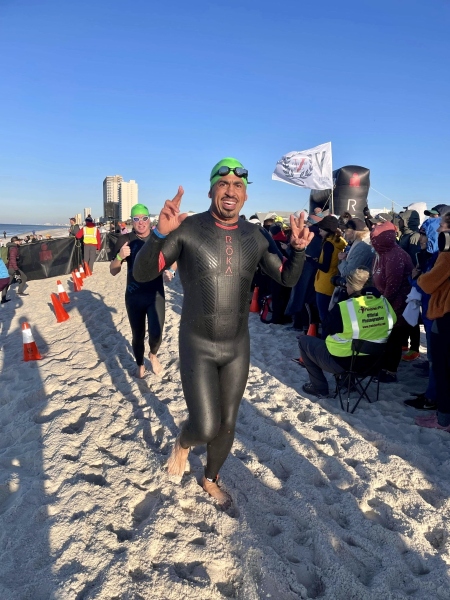
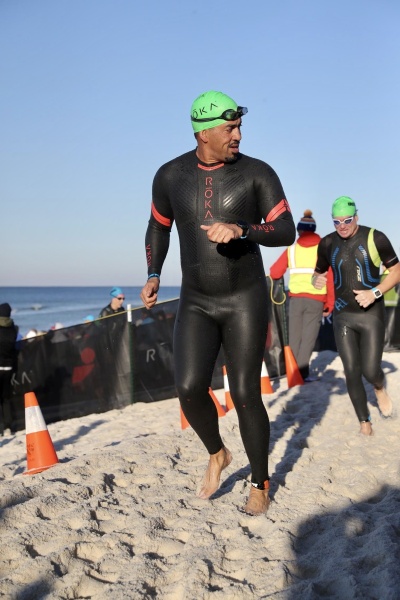
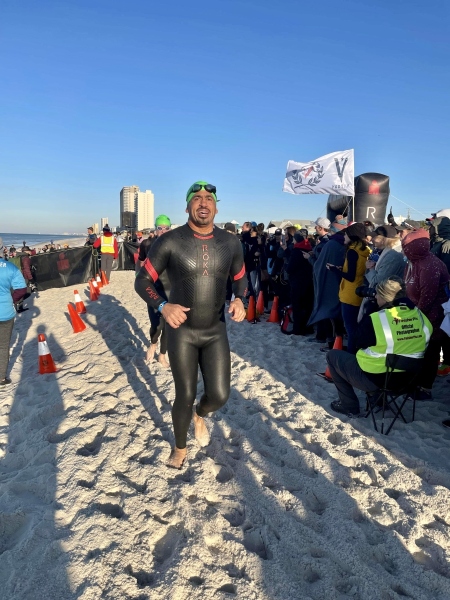





Trackbacks/Pingbacks